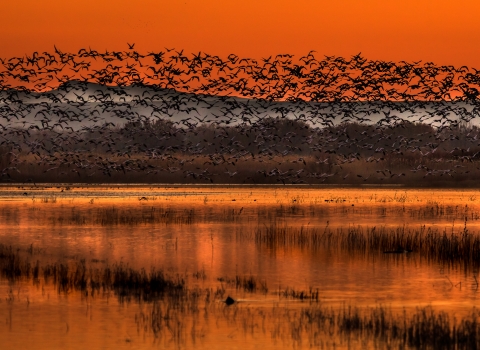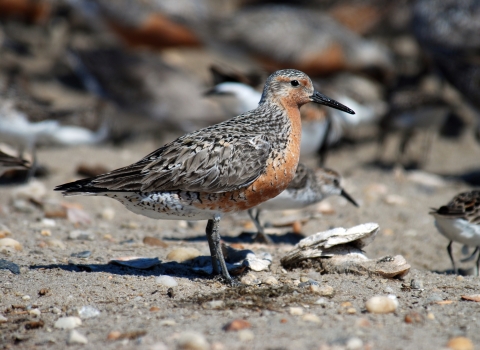Wildlife needs room to roam. In Nevada, animals including mule deer and pronghorn use open range areas called corridors for their annual migrations and day-to-day movement. On March 1, 2019, the Department of the Interior announced $1.5 million in funding for private land habitat projects across eight western states. These projects support objectives outlined in Secretarial Order 3362, which aims to enhance and improve the quality of big-game winter range and migration corridor habitat on federal lands under the Department’s jurisdiction.
In Nevada, five projects stretching across 1,500 acres of sagebrush sagebrush
The western United States’ sagebrush country encompasses over 175 million acres of public and private lands. The sagebrush landscape provides many benefits to our rural economies and communities, and it serves as crucial habitat for a diversity of wildlife, including the iconic greater sage-grouse and over 350 other species.
Learn more about sagebrush ecosystem received $235,000 under the Partners for Fish and Wildlife Program. Wildlife biologists from the Partners Program will work in collaboration with private landowners and the Nevada Department of Wildlife to enhance habitat for big-game species such as mule deer and pronghorn.
The funded projects include controlling invasive annual grasses, planting sagebrush seedlings, seeding native vegetation, and improving or removing fences to reduce risk to migrating animals.
These improvements are also good for Greater sage-grouse and over 350 other species that depend on the sagebrush ecosystem for survival.
“Improving big-game winter range and migration corridors in Nevada helps to bring balance back to the sagebrush ecosystem, enhances the quality of habitat for other non-migrating species and is good for livestock that graze on this land,” said Susan Abele, Nevada State Coordinator for the Partners for Fish and Wildlife. “We’re looking forward to starting these important projects.”
The projects are expected to begin as soon as this spring.
In addition to the funding for these projects provided by the Service’s Partners Program, some projects will receive matching grants delivered through a $2.65M National Fish and Wildlife Foundation grant program.
By Meghan Snow, Regional Office



